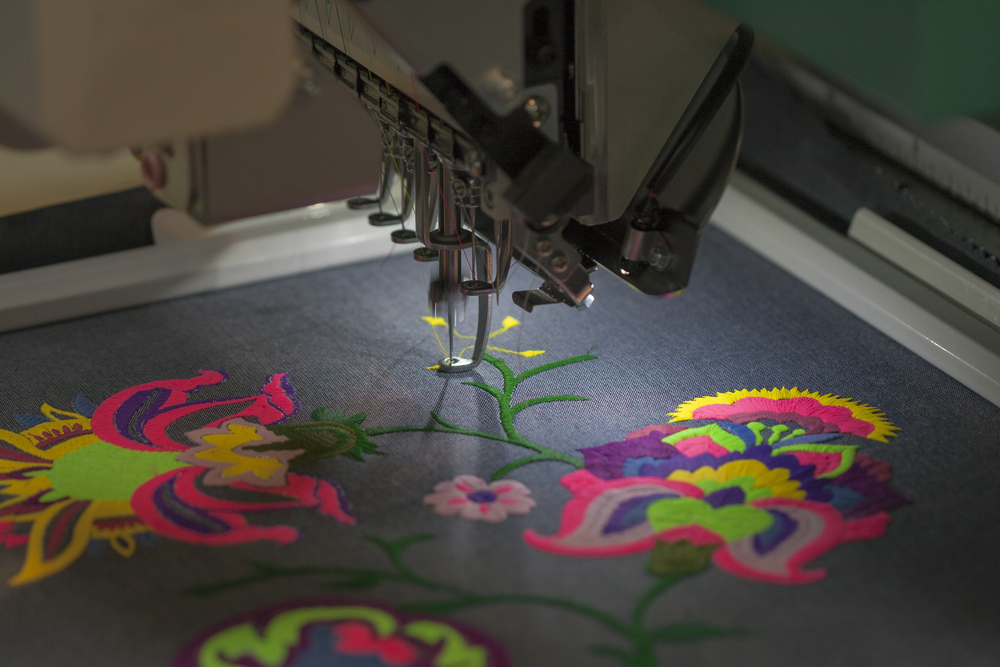Simplifying the Art of Embroidery Digitizing: Step-by-Step Overview
Needlework digitizing is a thorough craft that requires accuracy and imagination. As innovation remains to advancement, the digitization process has become more accessible, allowing enthusiasts to bring their elaborate designs to life with ease. In this overview, we will certainly unravel the complexities of embroidery digitizing, breaking down each step systematically to simplify the process and empower both novices and experienced embroiderers alike. Keep tuned to discover just how you can streamline this complex art kind and change your creative visions into wonderfully embroidered masterpieces.
Understanding Needlework Digitizing Software Application
Needlework digitizing software works as an important tool for changing detailed styles into electronic styles compatible with embroidery devices, facilitating specific sewing and personalization. This specialized software enables users to import numerous photo documents formats, such as JPG or PNG, and convert them into embroidery machine-readable styles like DST, EXP, or PES - Digitizing for Embroidery. By utilizing functions like stitch modifying, padding alternatives, and thread color choice, digitizing software application makes it possible for individuals to regulate every aspect of the style procedure
Furthermore, advanced needlework digitizing software program provides tools for developing intricate layouts, changing stitch thickness, and incorporating complex details. Customers can additionally preview the style before stitching it out, making sure precision and decreasing errors. Additionally, many software application supply automated functions that assist enhance the digitizing process, saving effort and time.
Understanding the capabilities of embroidery digitizing software is necessary for attaining top quality cause embroidery jobs. By grasping this tool, needlework lovers and experts can release their imagination and bring complex styles to life with accuracy and effectiveness.

Picking the Right Design Data
After acquainting yourself with the capabilities of embroidery digitizing software application, the following essential action in the process is selecting the ideal layout file for your job. Digitizing for Embroidery. When choosing a layout file for needlework digitizing, it's important to think about the complexity of the style, the dimension of the final item, and the sort of textile you will certainly be working with
For detailed designs with great details, a high-resolution photo or vector file is advised to guarantee that the needlework device can precisely reproduce the design. Additionally, the size of the end product plays a substantial role in selecting the ideal design file. Bigger layouts might need higher resolution files to preserve quality and sharpness.
Furthermore, the sort of textile you will be stitching on affects the selection of layout documents. Various materials might need changes in the layout data to make sure that the stitches are correctly lined up and the style looks like intended. By thoroughly selecting the best layout documents based on these variables, you can set on your own up for a successful needlework digitizing process.
Digitizing Devices and Strategies
Using specialized software program and precision methods, digitizing devices are essential in transforming complex layouts right into embroidery-ready data. Needlework digitizing software program, such as Wilcom, Hatch, or Embrilliance, provides the needed platform to transform art work into stitch data. These programs offer functions like stitch editing and enhancing, underlay options, and text tools to ensure the design equates perfectly onto fabric.
One of the crucial methods in digitizing is creating a clear path for the needlework device to adhere to. This entails digitizing each component of the layout with accuracy, establishing stitch kinds, thickness, and directions. By utilizing devices like digitizing tablets or software-specific plugins, embroiderers can accomplish a high degree of precision in their digitized layouts.
In addition, understanding the art of rug sewing is vital for creating top quality needlework. Underlay sewing maintains the textile and creates a foundation for the style, making certain that the end product is both aesthetically enticing and durable. By understanding these digitizing tools navigate to this website and methods, embroiderers can raise their craft and bring complex designs to life with precision and effectiveness.
Customizing Stitch Types and Directions
Having actually developed a structure in digitizing devices and strategies, an essential facet beforehand embroidery workmanship hinges on customizing stitch kinds and instructions with accuracy and function. The selection of stitch kinds can substantially influence the overall look and texture of the embroidered style. Satin stitches, known for their smooth and shiny finish, job well for developing borders and text. On the various other hand, fill stitches are suitable for covering larger areas efficiently. By tactically incorporating these stitch kinds, embroiderers can accomplish deepness and measurement in their designs.
Additionally, the direction of stitches plays an essential duty in enhancing the aesthetic allure of the last embroidery. By trying out with various stitch angles and patterns, embroiderers can bring their layouts to life with remarkable information and intricacy.
Screening and Refining Your Digitized Style
To make certain the precision and top quality of your digitized style, thorough screening and improvement are important steps in the embroidery digitizing procedure. When you have actually finished the digitization of your design, it is crucial to test it prior to proceeding with the real needlework. Examining enables you to identify any prospective concerns such as string breaks, stitch density issues, or layout distortions that may affect the result.

After testing, it is very important to improve your digitized layout based on the responses from the test sew-out. This may entail tweaking sew settings, changing densities, or making adjustments to the general layout to achieve the desired result. By repeating with screening this article and refinement, you can fine-tune your digitized layout to excellence before progressing with the real embroidery process.
Final Thought
Finally, mastering the art of embroidery digitizing requires a detailed understanding of the software, picking the appropriate layout data, utilizing digitizing tools and methods, personalizing stitch kinds and instructions, and testing and fine-tuning the digitized layout. By adhering to these actions, click this site embroiderers can streamline the digitizing procedure and create premium embroidered styles with precision and performance.